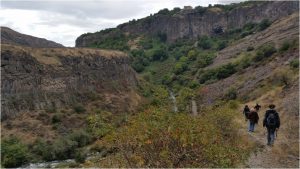| Project duration: | 2011-2015 |
|---|---|
| Project status: | Finnished |
| Project leader: | dr hab. Rafał Kowalczyk |
The 5-year (2011-2016) BIOGEAST project aimed at building a network of research centres in Central and Eastern Europe and Siberia, and apply the state-of-art knowledge in genetics and macroecology. The project was performed by 2 consortium members located in EU: Mammal Research Institute, Polish Academy of Sciences, Poland (MRI-PL), and Department of Zoology, University of Tartu, Estonia (UT-EE) and 7 partner institutions from 5 Eastern countries: A. N. Severtsov Institute of Ecology and Evolution, Moscow, Russia; Research Institute of Game Management and Fur Farming, Kirov, Russia; Institute for Biological Problems of Cryolithozone, Yakutsk, Russian Federation; The Schmalhausen Institute of Zoology, Kiev, Ukraine; Faculty of Life Sciences, Ilia Chavchavadze State University, Tbilisi, Georgia; Scientific and Practical Center of National Academy of Science of Belarus for Biological Resources, Minsk, Republic of Belarus; and Department of Zoology, Faculty of Biology, Yerevan State University, Yerevan, Republic of Armenia.
In total, 90.5 out of 91 person-months planned for exchange visits were used, including 35.5 person-months from the EU to the Eastern countries, 55 from the Eastern countries to the EU. Transfer of knowledge between project partners included trainings of staff from partner institutions (conducted both at MRI-PL and UT-EE, and at partner institutions by staff seconded from consortium members), as well as regular seminars delivered by the seconded staff and two workshops. In total, 53 seminars were given in the course of the project and 12 different types of trainings provided.
The consortium members and project partners have build a research network to: (1) investigate phylogeography of 7 species of large mammals (wolf, Eurasian lynx, brown bear, moose, red deer, roe deer, and wild boar); (2) identify the locations of LGM refugia for large mammals in Eastern and South-Eastern Europe and the routes of their post-glacial dispersal to current ranges; (3) recognise large-scale patterns of neutral genetic variation of large mammals and correlate them with macroecological variation in life habits; (4) investigate the past genetic variation of European bison. The project has succeeded in all of its planned aspects.
Thanks to international collaboration we were able to investigate phylogeography and large-scale patterns in genetic variation of large carnivores and ungulates. Such aspects were studied so far mainly in Western and Central Europe. Extension of sampling and analysis to Eastern Europe and Siberia allowed to better understand and discover new aspects of large mammals phylogeography using mtDNA and microsatellite markers.
We found that moose appeared to have three distinct genetic lineages (Western, Central, and Eastern), reflecting their survival in Last Glacial Maximum (LGM) refugia, postglacial recolonization, and historical decline in the south-western part of their range. The mtDNA analysis revealed hybridization of European roe deer with Siberian roe deer. Genetic variation in mtDNA of wild boar appeared surprisingly small over the large biogeographic area suggesting the lack of significant topographic barrier to wild boar migrations and gene flow in the lowlands of Central and Eastern Europe. We found that European bison descended from an ancient hybridization between the extinct steppe bison and ancestors of modern cattle (aurochs) before 120kya. Our results yielded evidence that habitat structure, management and a different history of population recovery have a strong influence on foraging behaviour of large herbivores reflected in stable isotope signatures. Eurasian wolves, as revealed by analyses of SNP (Single Nucleotide Polymorphism) markers, form the following genetically distinct subpopulations: Italian, North-Eastern European, Ukrainian Steppe, Carpathian, Dinaric-Balkan, East-Siberian, and Caucasian. The biogeographic patterns based on neutral and adaptive genetic variation are the same and reflect the demographic history of wolf population, especially their survival in different refugia during LGM, and routes of postglacial recolonisation. Large-scale pattern in the adaptive genetic variation of European wolves was correlated with variation in ecological parameters (habitats, climate). As an important outcome of this synthesis, we discussed the most pressing issues threatening wolf populations in Europe and provided suggestions for science-based wolf conservation and management at regional and Europe-wide scales. Four genetic units, clearly divergent from each other, were revealed for Eurasian lynx. Two possible scenarios of the lynx population history in Europe were proposed, with one suggesting origin of the species from the Carpathian and the second from west-Russian region. Correlations of population genetic divergence in the Eurasian lynx were found with climatic factors (snow depth) and the share of large ungulates in the lynx diet suggesting a possibility of adaptations to local ecological conditions. We proposed several migration scenarios for brown bears and suggested that bears and other mammals, including humans underwent a series of parallel migrations in Eurasia and to North America during the Late Pleistocene.
Based on these results, 18 publications were submitted or published in high rank journals including Nature Communications, Biological Reviews, Journal of Biogeography.
The results of the project already formed a major contribution to our understanding of pan-European patterns and processes in mammalian biodiversity on the level of genetic variation. This was the first attempt of such a large-scale study in Eurasia.





